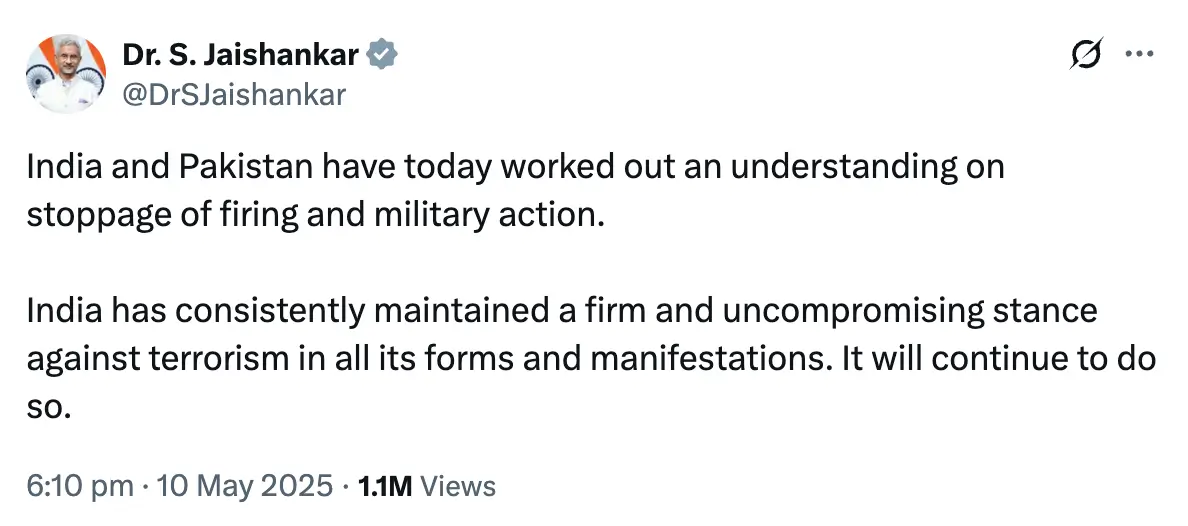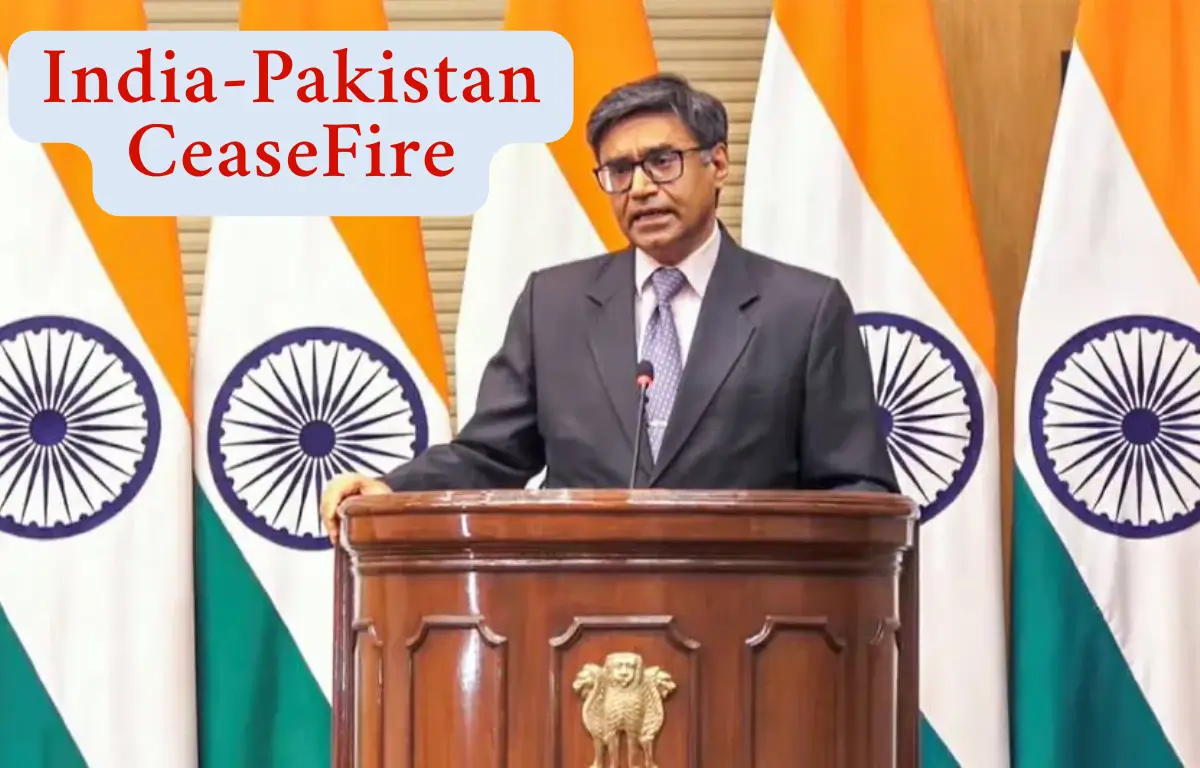Ceasefire Declaration: Peace Brokered at the Edge of Disaster
After a week of intense military escalation between India and Pakistan that brought the subcontinent to the brink of full-scale war, both nations have agreed to a full and immediate ceasefire. The ceasefire came into effect at 5:00 pm on 10th May 2025, following successful U.S.-led diplomatic intervention, spearheaded by President Donald Trump, Secretary of State Marco Rubio, and Vice President JD Vance.
The Trigger: Pahalgam Terror Attack and Operation Sindoor
The conflict was sparked by a terrorist attack on April 22 in Pahalgam, Jammu and Kashmir, which claimed the lives of 28 civilians, many of them tourists. The Indian government attributed the attack to Pakistan-based militant groups. In retaliation, India launched “Operation Sindoor“ on 7th May 2025, targeting terror camps in Pakistan and Pakistan-occupied Jammu and Kashmir.
Pakistan responded swiftly with “Operation Bunyan Ul Marsoos“, deploying drones and missiles against Indian military installations and urban areas across Jammu & Kashmir, Punjab, Rajasthan, and Gujarat. The strikes resulted in over 60 civilian deaths, mass evacuations, and widespread damage to infrastructure.
Ground Situation: Blackouts, Displacement, and Civilian Impact
The week-long confrontation saw air raid sirens, city-wide blackouts, and panic across border states. Cities like Amritsar, Jammu, and Sialkot were heavily affected. Civilian shelters were overwhelmed, and thousands were displaced. The Indian Premier League (IPL) was suspended mid-season due to security concerns, and curfews and essential goods restrictions were imposed in parts of northern India.
Global Diplomatic Push and Ceasefire Declaration
Amid growing fears of a larger regional conflict, President Donald Trump led urgent diplomatic negotiations. The U.S. administration coordinated with Saudi Arabia and Turkey to de-escalate tensions. Trump, in a statement from the White House, called the ceasefire “a critical step toward restoring peace and avoiding irreversible damage on both sides.”
Pakistan’s Foreign Minister Ishaq Dar confirmed the ceasefire in Islamabad, stating, “Pakistan remains committed to peace but will always uphold its sovereignty. We are prepared for dialogue provided there is mutual respect and sincerity.”


Next Steps: Talks and De-escalation
Senior military officials from India and Pakistan are scheduled to meet on 12th May 2025 to finalise confidence-building measures and establish a framework for continued peace. The international community has cautiously welcomed the development, urging both sides to pursue long-term diplomatic solutions to address underlying issues.
India-Pakistan Conflict: Conclusion
While the ceasefire has brought much-needed relief to millions living near the border, the situation remains fragile. The events of the past week have highlighted how quickly tensions can spiral out of control between the nuclear-armed neighbours. With global attention fixed on South Asia, the coming weeks will be crucial in determining whether this truce holds or is merely a pause in a deeply rooted conflict.









